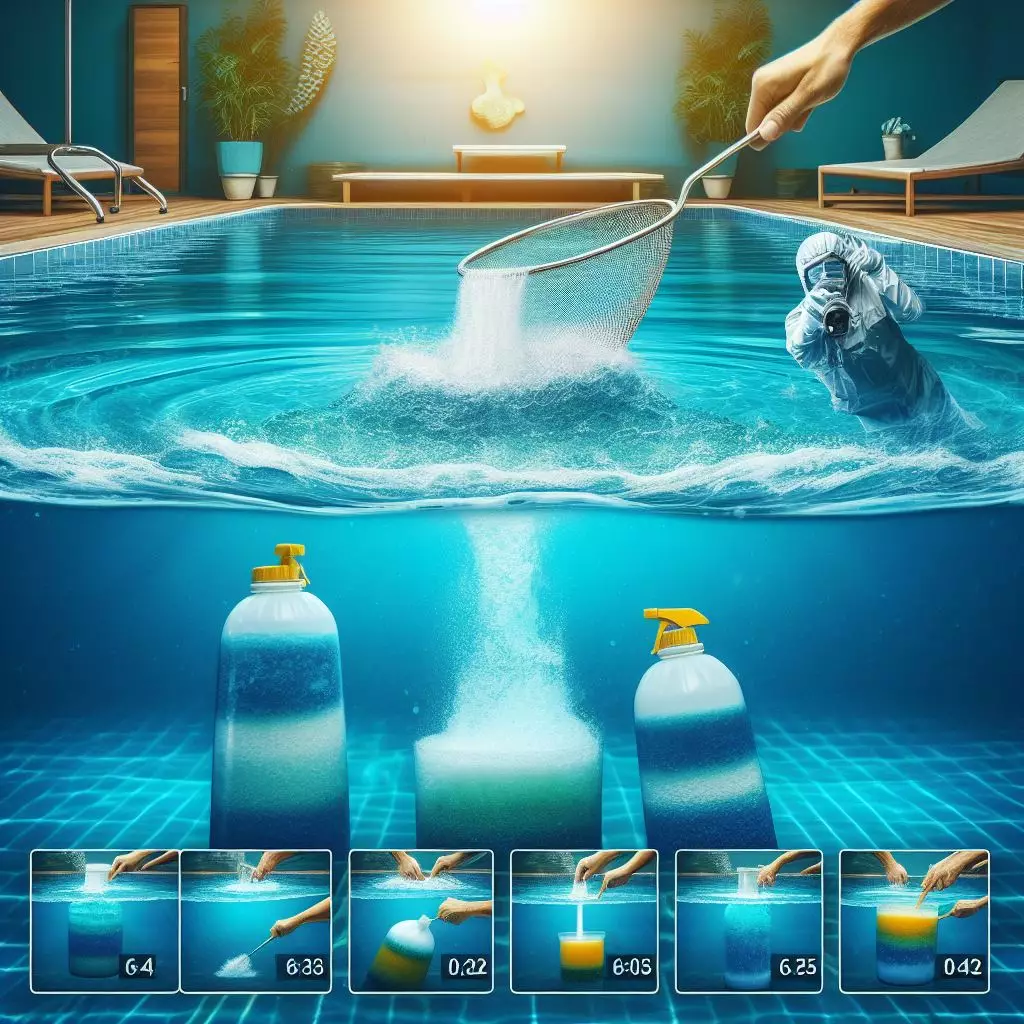Clear and transparent pool water is a key factor in ensuring the health and safety of swimmers. In the management of pool water quality, the synergistic effect of pool clarifiers and circulation systems is considered an indispensable element in maintaining water clarity. To better understand why pool clarifiers need to work in conjunction with circulation systems, let’s delve into the close relationship between them.

I. Role of Pool Clarifiers
1. Particle Aggregation
One of the primary functions of pool clarifiers is to aggregate tiny particles in the water, forming larger particles. Many small pollutants, impurities, and particles exist in pool water, negatively affecting water clarity. Since these particles are too small to be effectively captured by traditional filters, clarifiers work by guiding these particles to adhere to each other, facilitating their aggregation into larger particles. This increases the likelihood of them being captured by the filtration system.
Example: Imagine numerous small suspended particles in the pool water, which may include particles brought in by swimmers like hair and sand. The clarifier acts to quickly aggregate these particles into larger flocs, making it easier for the filter to capture and effectively remove them from the water.
2. Improved Water Transparency
Through the action of clarifiers, tiny particles dispersed in the water are aggregated and removed, helping to enhance water transparency. Clear water quality is crucial for attracting visitors to the pool and improving its overall appearance. Clarifiers effectively reduce the turbidity of the water, making the pool water appear clearer and more transparent.
Example: In pools where clarifiers are used, visitors can noticeably feel an improvement in water transparency. The haziness caused by particles is eliminated, and the pool water presents a clear and transparent state, providing swimmers with a more enjoyable and refreshing swimming experience.
II. Role of Circulation Systems: Even Distribution of Clarifiers and Efficiency Enhancement
To ensure that clarifiers are evenly distributed throughout the entire pool, pools rely on circulation systems. The circulation system, driven by water flow, ensures that clarifiers effectively cover all areas of the pool, thereby enhancing water clarity. Here are specific roles of the circulation system:
1. Even Distribution of Clarifiers
The circulation system, through continuous water flow, evenly distributes clarifiers throughout the entire pool. This ensures that clarifiers come into contact with every area, including those far from the point of clarifier application. Even distribution is crucial to ensuring that clarifiers effectively perform their function, preventing some areas of the water from being left uncovered due to flow variations and maintaining consistency in water quality throughout the pool.
2. Efficiency Enhancement
After clarifiers aggregate particles into larger flocs, these larger particles need to be captured by the filtration system to ensure clean water. The circulation system plays a crucial role in this process by ensuring that aggregated particles are quickly and evenly transported to the filter. This efficient transport process enhances the cleaning efficiency of the filter, ensuring the timely removal of particles from the water.
Example: The circulation system functions as the bloodstream of the pool, ensuring that water flows throughout the pool. Clarifiers mix with the flowing water, allowing for their even distribution in the entire pool water area. Once clarifiers have aggregated particles, the circulation system ensures the rapid transportation of these aggregated particles to the filter, thereby improving cleaning efficiency.
III. Recommendations for Clarifier Use and Filter Monitoring
1. Follow Usage Instructions
When adding clarifiers, it is imperative to strictly follow the product instructions. Product instructions typically include the correct dosage and usage methods, which are crucial for ensuring the optimal effectiveness of clarifiers. Different types of clarifiers may have varying usage specifications, including the time, frequency, and dosage of application. Users should carefully read product instructions to ensure that clarifiers are used according to the recommended guidelines, maximizing water clarity.
2. Monitor the Filter
After using clarifiers, it is essential to regularly check the status of the filter to ensure its normal operation. Since clarifiers work by aggregating particles into larger flocs, these particles may increase the burden on the filter. The cleanliness of the filter directly affects the filtration efficiency of the water. If the filter is clogged with large particles, it can impede water circulation, reducing the overall efficiency of the system. Therefore, regular checks of the filter’s cleanliness and timely cleaning or maintenance, as needed, are crucial steps to ensure the continuous clarity of the water.
Example: If the frequency of clarifier use increases or water quality issues persist, it may be necessary to intensify filter monitoring. Checking for accumulated particles in the filter and cleaning it promptly can help maintain the normal operation of the entire system. Regular maintenance of the filter ensures that the system remains operational, even during peak times, providing a clear and consistent water quality.
In pool maintenance, the harmonious coordination of clarifiers and circulation systems is the key to maintaining water clarity. Through the effective removal of pollutants, impurities, and particles, this synergistic action not only provides a pleasant swimming environment but also ensures that swimmers can enjoy a doubly assured guarantee of health and safety in clear water. Therefore, the seamless collaboration between clarifiers and circulation systems becomes an essential strategy in the water quality management of every pool.
